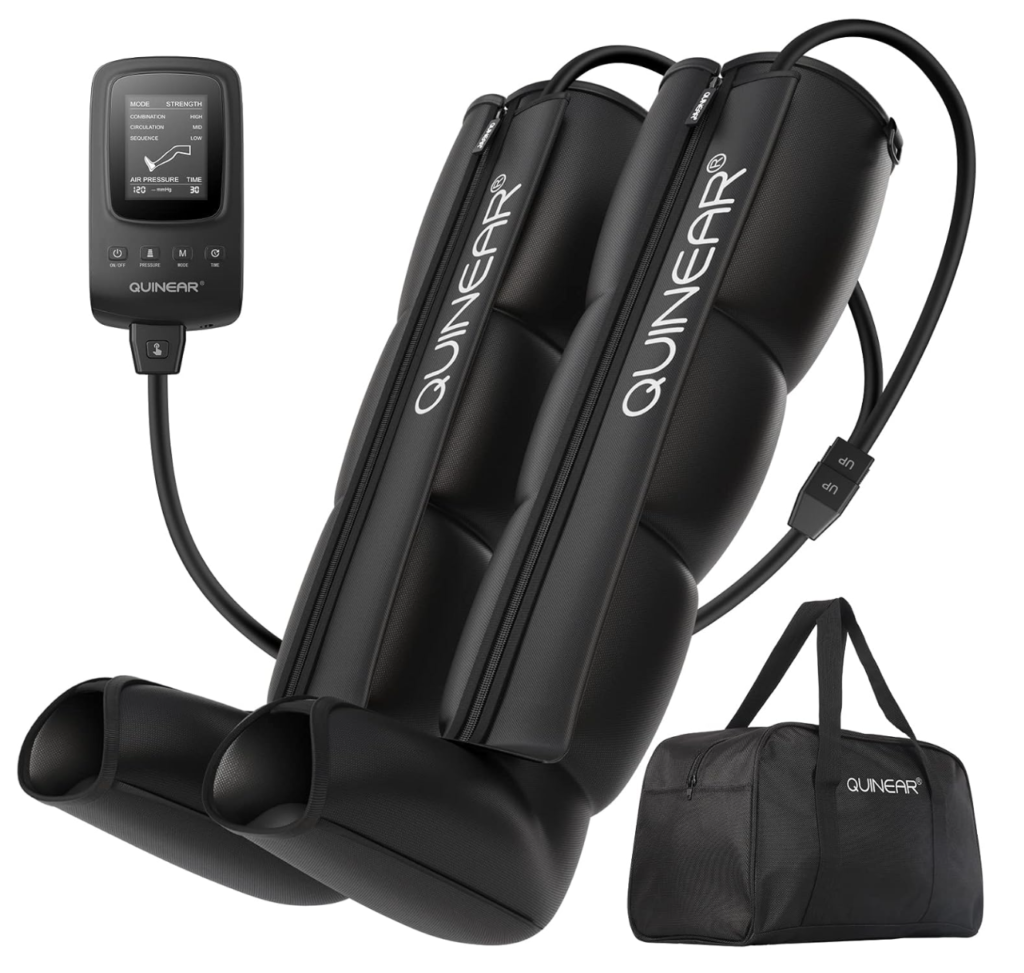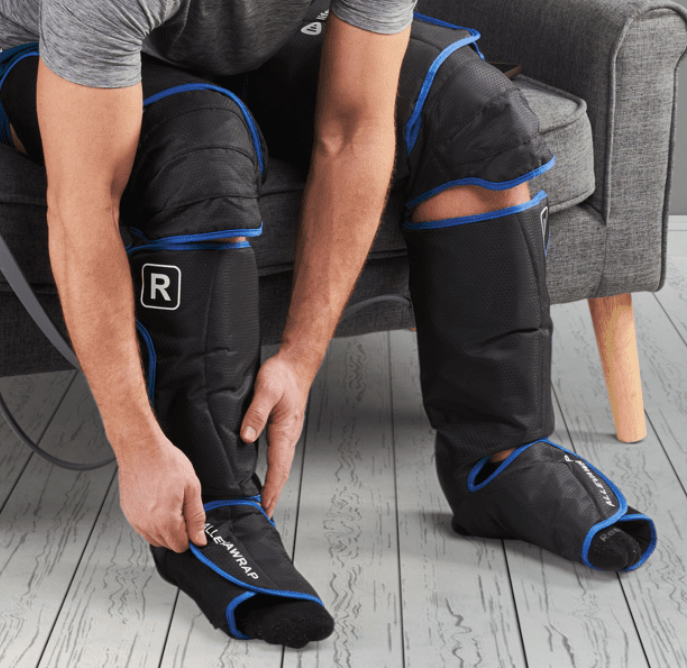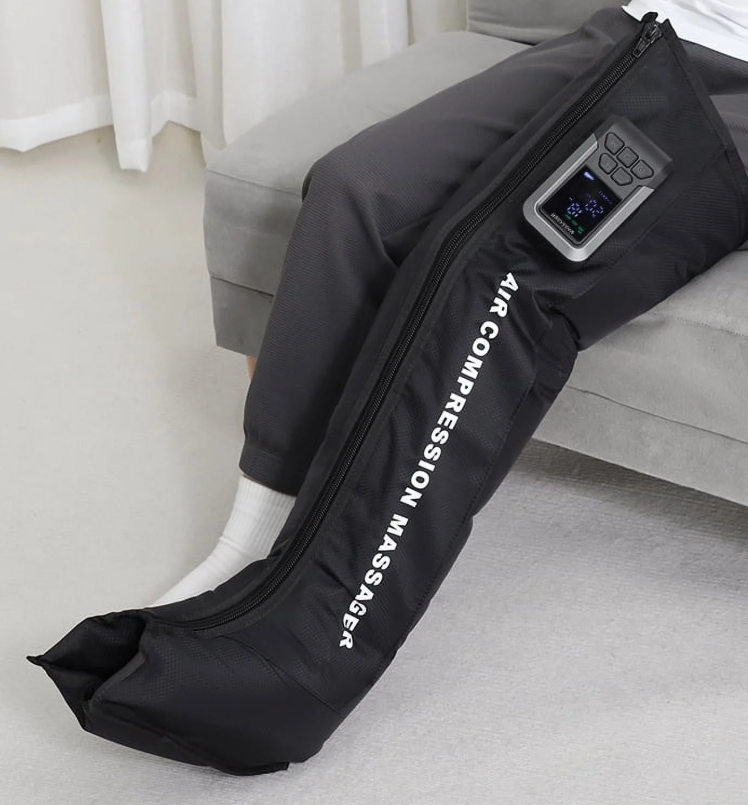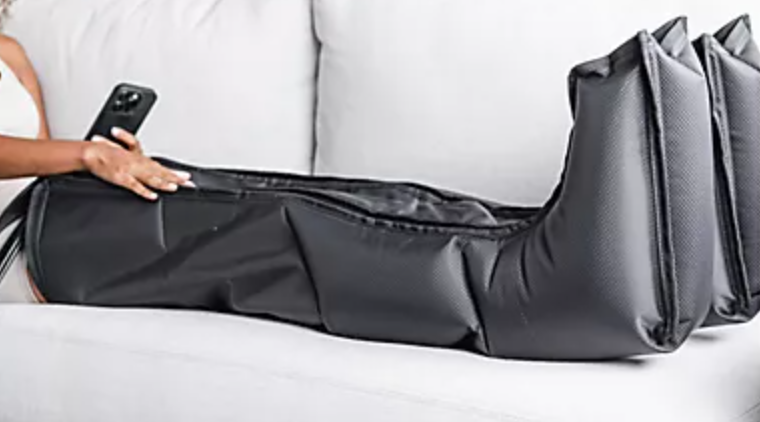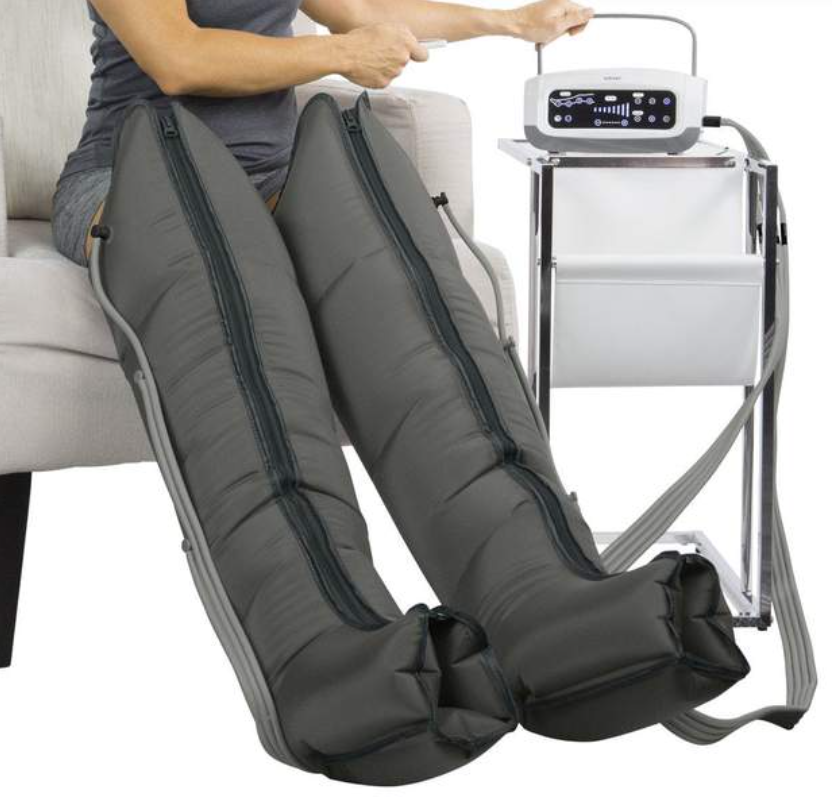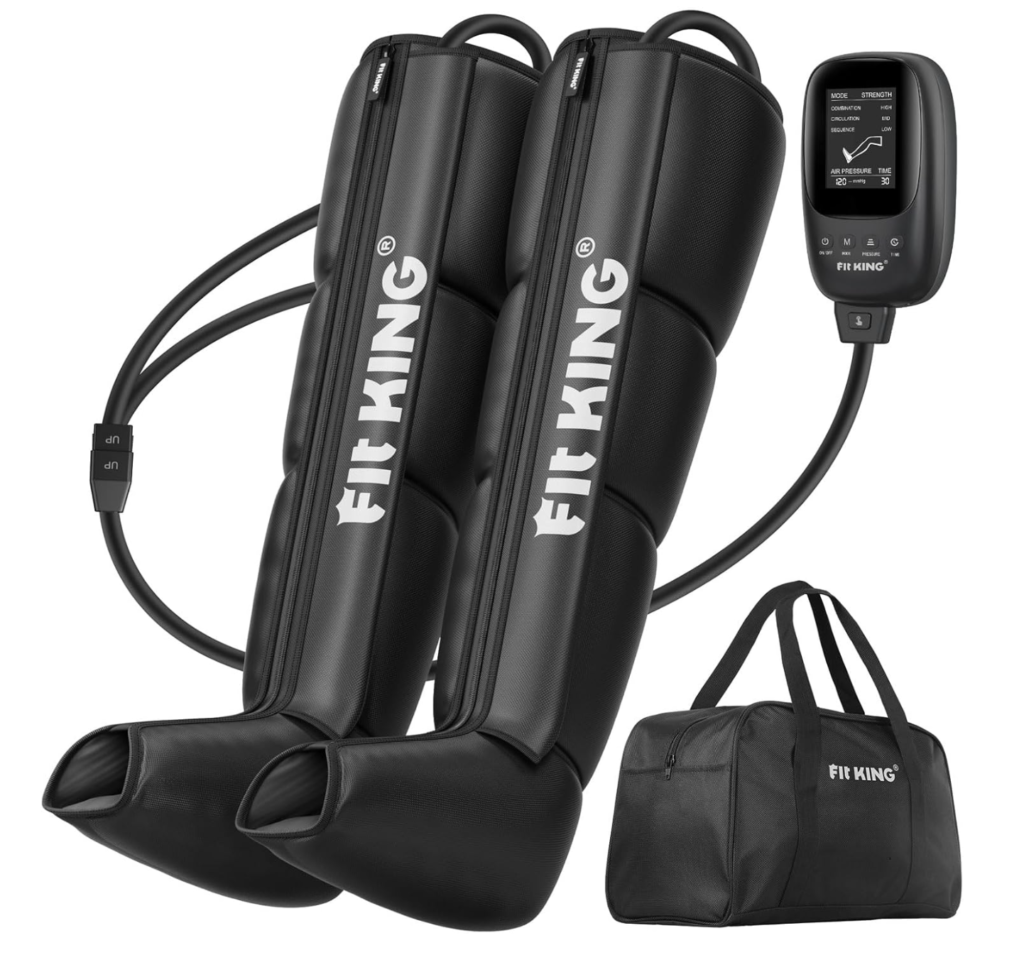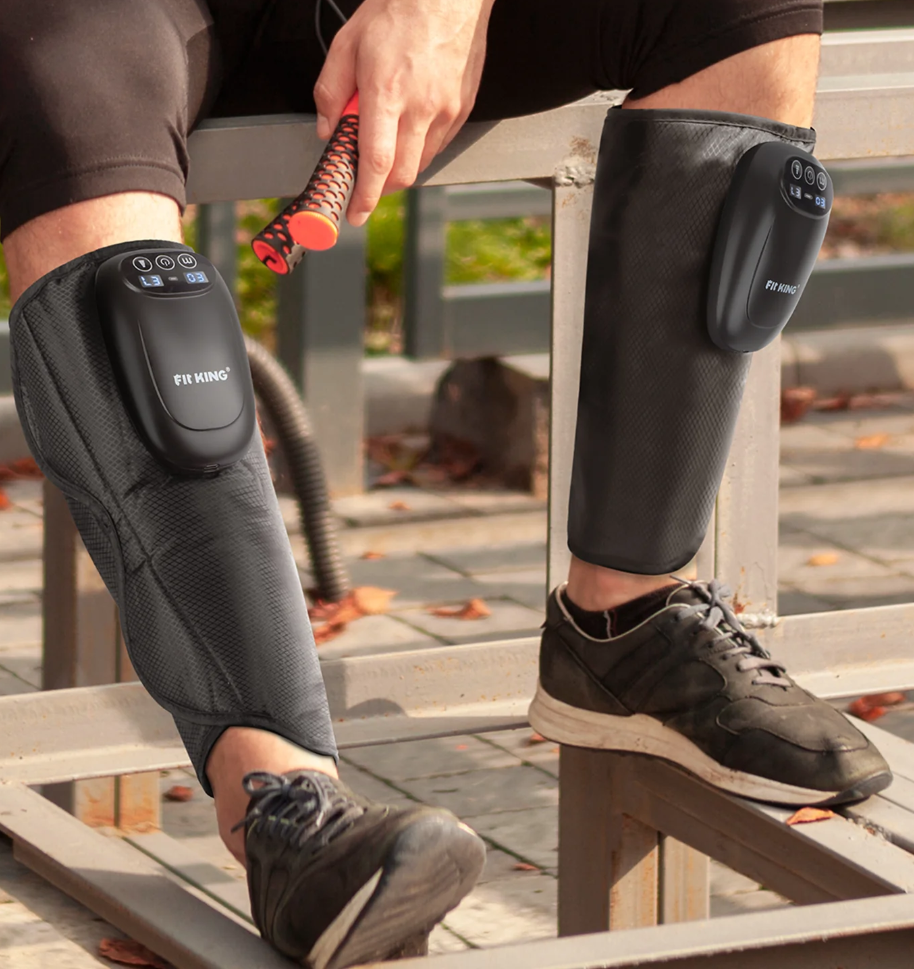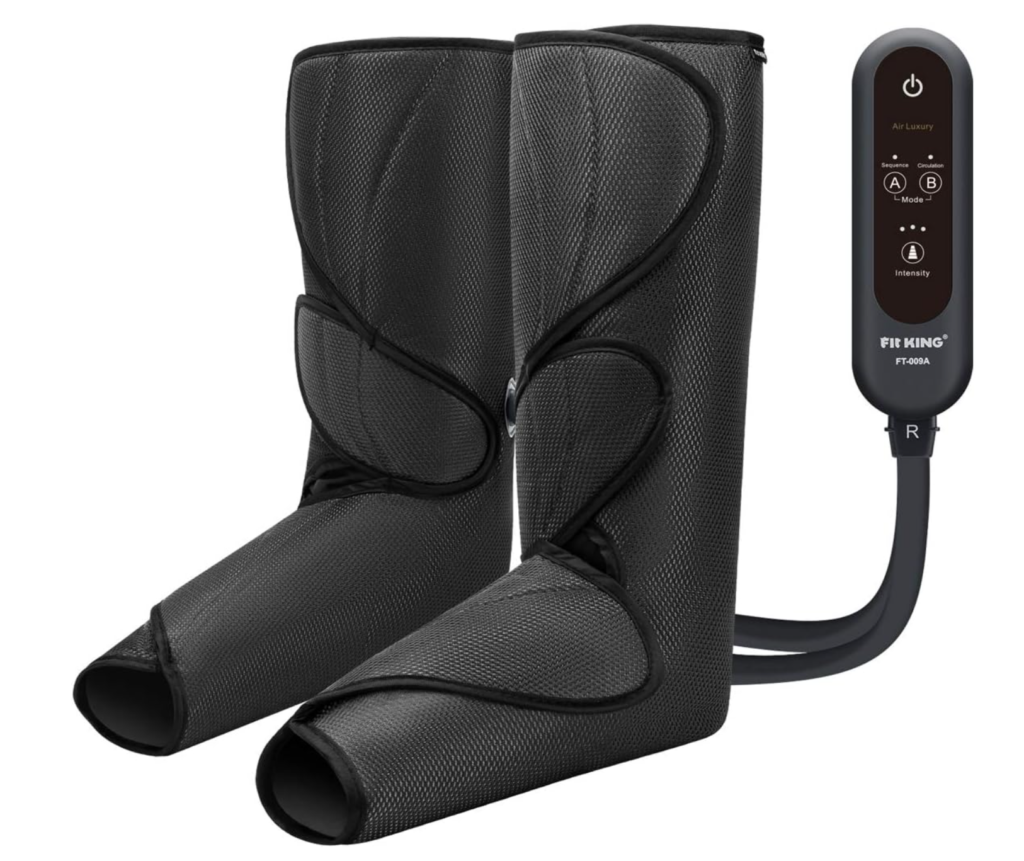
Where Wellness Meets Wearable Recovery
Why This Massager Matters More Than Ever
In an age where burnout is a baseline and blood circulation is compromised by deskbound days and post-pandemic fatigue, the FIT KING Leg Air Massager steps forward not as a luxury—but as a necessity.
Engineered with advanced compression therapy principles, this device merges physiological science with tech-driven comfort, offering a revitalizing experience for tired, swollen, or overworked legs.
“It’s like having a personal lymphatic therapist on standby—minus the spa price tag.”
What Makes the FIT KING Leg Massager Work?
At its core, FIT KING uses graduated air compression to simulate kneading, stroking, and rhythmic pressure—mimicking techniques found in sports massage, physical therapy, and hospital-grade pneumatic boots.
This is circulatory self-care powered by clinical-grade recovery science.
Core Features & Physiological Benefits
Feature Value to Your Body 2 Massage Modes Adjusts to recovery vs relaxation needs 3 Intensity Levels Customizable pressure based on your comfort 10 Massage Techniques Mimics Shiatsu, compression, and myofascial release Max Calf Size: 28.5” Fits most users, including athletic builds Auto Shut-Off Built-in safety & convenience feature Related: Best Leg Massagers for Circulation
What It Feels Like: Real Recovery, Right at Home
“Imagine sliding into a warm, padded cocoon that wraps around your calves and thighs with the care of a pro massage therapist. The FIT KING Massager pulses like a tide—squeezing, releasing, and reviving your legs until they feel brand new.”
Whether you’re on the couch, at your desk, or decompressing before bed, this device offers instant relief from swelling, soreness, and fatigue. It’s portable, powerful, and ridiculously easy to use.
✅ Pros & Cons: The Honest Rundown
Pros
- Real pneumatic compression—not just vibration
- 10 massage techniques keep it engaging and therapeutic
- Ideal for recovery, relaxation, and RLS
- Quiet, portable, and includes a travel case
- Auto shut-off = perfect for nighttime use
- Fits larger calves comfortably—many competitors don’t
Cons
- Not as deep as intense deep-tissue massagers
- May require adjustment for slimmer legs
- No companion app or smart features (yet)
- First-time users may second-guess pressure levels
What the Science Says (And Why It Matters)
Studies show that intermittent pneumatic compression (IPC) can:
- Improve venous return and oxygen delivery
- Enhance lymphatic drainage
- Reduce post-exercise soreness
- Flush out lactic acid and metabolic waste
- Help reduce leg swelling and fluid retention
What are the benefits of compression boots?
A 2020 study in the Journal of Sports Rehabilitation found that just 15 minutes of IPC reduced muscle soreness and improved range of motion in athletes.
Who Should Use the FIT KING Leg Air Massager?
This isn’t just for gym junkies or older adults.
This is everyday recovery for real people:
- Nurses & Teachers – On their feet all day
- Athletes & Gym-Goers – Recover after leg day
- Older Adults – Stimulate circulation, reduce swelling
- Pregnant Women – Gentle relief from edema (with OB approval)
- Remote Workers – Reverse the effects of sitting all day
Want targeted relief? Check out our guide to the Best Massagers for Restless Leg Syndrome.
A Design That Doesn’t Need a PhD
One of the best parts? It’s brain-dead simple to use.
- A remote control lets you change intensity or pause a session
- You don’t need a smartphone, app, or Wi-Fi to operate it
- Built-in timer = no risk of overuse
- Comes with a travel-friendly bag
For those who hate over-complicated gadgets—this is a win.
Smart Recovery: Where the Future Is Headed
The current FIT KING model is already a solid performer—but the future is even brighter.
Here’s what’s coming (and how this product might evolve soon):
AI-Powered Massage Routines
Imagine a system that learns your body’s unique recovery patterns. Based on your usage, fitness levels, and even your stress markers, future FIT KING models could adapt pressure and duration to suit your exact needs—on the fly.
Biofeedback App Syncing
Next-gen versions could sync with health apps like Apple Health or Fitbit to adjust massage intensity after intense workouts or long travel days. Think of it like a personal trainer for your legs.
Voice-Activated Commands
“Alexa, start a 20-minute lymphatic drainage session.”
Hands-free control could be built-in—just like smart home devices.Remote Wellness Coaching
Your device could soon offer real-time performance insights:
“Compression complete. Circulation increased by 17%. Consider light hydration.”
Adaptive Pressure Mapping
Think smart beds—but for your legs. Embedded sensors may soon allow pressure zones to auto-adjust to target sore areas more precisely while avoiding sensitive spots.
Why It Matters
We track our sleep.
We monitor steps.
We optimize hydration.
Why not upgrade recovery with the same level of tech?
Compression therapy is shifting from a passive tool to an interactive, data-driven recovery system.
And FIT KING is poised to evolve right alongside your wellness stack.
Perfect for Gifting (Or Treating Yourself)
FIT KING is one of those rare gadgets that actually gets used weekly, not forgotten in a drawer.
Whether it’s for:
- Mother’s Day / Father’s Day
- Marathon recovery
- Healthcare appreciation gift
- Self-care investment post-pandemic
…it just makes sense.
Related: Best Gift-Ready Leg Massagers
✅ The Bottom Line: Your Legs Deserve This
If you’re serious about reducing soreness, boosting circulation, or just feeling like a new human after a long day—the FIT KING Leg Air Massager delivers real results backed by science, not hype.
It’s affordable.
It’s effective.
And it’s designed to fit into your life, not complicate it.
Thousands of users are already using FIT KING to fight fatigue, swelling, and restless legs—now it’s your turn.
👉 Click here to explore the latest price and availability.
Want more options? Check out the Best Compression Boots of 2025.
